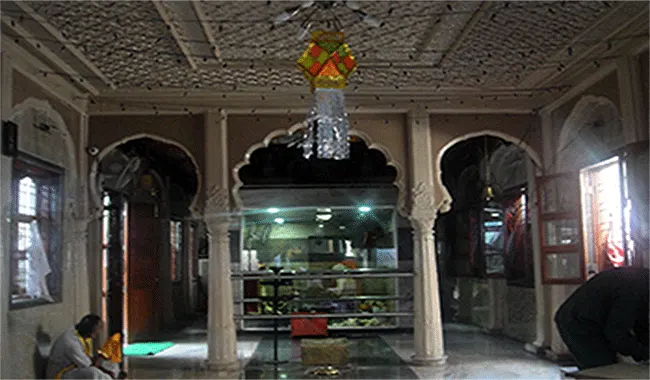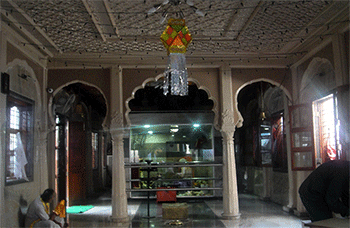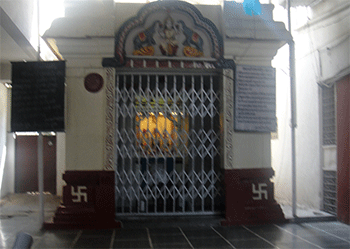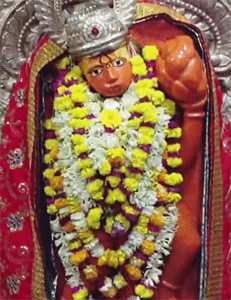
Pune Then:
Today Pune is one of the best-known cities of India. It is also known as the cultural capital of Maharashtra. Human dwellings and settlements normally bloom adjacent to a river always. In the same way from time immemorial, there was a settlement on the banks of river Mutha. The river Mutha confluences with the Mula River and the settlement on the right bank of Mutha is the seeding or beginning of the present day Pune. This settlement area is presently known as Kasabe.
Kasabe of earlier days was destroyed completely by Murar Jagdeo, commanding the Adil Shahi force in 1630. It was during Shivaji Maharaj's time that the city was recreated as Kasabe Pune. With Kasabe Ganapati temple and Lal Mahal (built for his mother), Pune once again became habitable.
Peths of Pune
 During the rule of Shahu Raje, he gave the province of Pune to the Peshwas. During the Peshwas time, the development of Pune started. Real urbanization and expansion of Pune started once Bajirao Peshwa settled down with Pune as his administrative headquarters. New areas were developed and were known as Peth. Peth is a business location. [We could see that even Bangalore was expanded with many Pet.] New peth was either named after the person who had developed it or was called by the name of a day of the week.
During the rule of Shahu Raje, he gave the province of Pune to the Peshwas. During the Peshwas time, the development of Pune started. Real urbanization and expansion of Pune started once Bajirao Peshwa settled down with Pune as his administrative headquarters. New areas were developed and were known as Peth. Peth is a business location. [We could see that even Bangalore was expanded with many Pet.] New peth was either named after the person who had developed it or was called by the name of a day of the week.
To extend facilities to citizens, old paths were split, new areas were added, and thus reorganized with new names. As per the local practice, the boundaries of the villages are marked by establishing a temple for Sri Maruti. This tradition is prominent/prevalent both in Andhra and Maharashtra. So whenever a new path is formed in Pune, a Maruti temple will be established at the border. It is one of the reasons we see many temples for Maruti in Pune.
Sadashiv Peth
Sadashiv Path is located south of Kasbah, which was the center of Pune at the time. In 1769, Sri Madhavrao Peshwa curved the southwest Budhwar Peth to form a path in honor of the Commander-in-chief during the Third Battle of Panipat, Sri Sadashivrao Peshwa.
Sri Maruti Mandir is seen just opposite Sri Rama's sannidhi. The mandir comprises a big hall and, on the north side, the garbhagraham and antarala. A huge portrait of the main deity near the Sri Rama Latham welcomes the devotees. Sri Rama-patham and ‘kurma’ are seen facing the main deity. Main sannidhi consists of antarala and garbhagraham.
After the initial reluctance by the people to come and settle, Sadashiv Peth went on to become the most affluent part of Pune City today. Today the boundaries of Sadashiv Peth can be traced by the location of - Nagnath Paar, Shani Paar, Bhikardas Maruti, and Pavan Maruti.
Bhikardas
Saraf is a surname for people who deal in banking and money lending. Sri Bhikardas Saraf, a Gujarat businessman, came to Pune and was stationed at Sadashiva Peth. He was dharmic in nature and fed sadhus and the poor. As a devotee of Sri Maruti, he had built a mandir for Sri Maruti in the garden adjacent to his residence. Mohalla people also offered prayers to Sri Maruti. Subsequently, people named this Maruti ‘Bhikardas Maruti’ as the founder of this Maruti was Sri Bhikardas Saraf. With time, a trust was formed to take care of this mandir and religious activities. Sri Krishnadas Madiwale had built Dharmasala during his trusteeship. A Ved patsala is also being run by the trust. Presently Sri Upendra Madiwale and Sri Hemanth Madiwale are the trustees.
Bhikardas Maruti Mandir
 The mandir is located near Maharana Pratap Udyan [garden] in Sadashiv Peth. From near the entrance of the garden, one has to enter the small lane leading to the Madiwale colony. As one enters the lane the mandir can be seen. Sri Maruti mandir is south-facing and Sri Ram mandir is north-facing.
The mandir is located near Maharana Pratap Udyan [garden] in Sadashiv Peth. From near the entrance of the garden, one has to enter the small lane leading to the Madiwale colony. As one enters the lane the mandir can be seen. Sri Maruti mandir is south-facing and Sri Ram mandir is north-facing.
Sri Rama sannidhi is in the middle of a hall. sannidhi consists of antarala and garbhagraham. In the garbhagraham, Sri Rama, Sri Sita, Sri Lakshmana, and Sri Maruti are seen on a high pedestal. Sri Maruti is seen in a sitting posture facing Sri Rama Parivar. The vigrahas of Lord’s are made of pure white marble. Pictures of Sri Samarth Ramdas, Akkalkot Sri Samarth, and Sri Dattatreya are also seen.
Sri Maruti mandir is seen opposite to this mandir. Mandir comprises a big hall and on the north side the garbhagraham and antarala. A huge portrait of the main deity near the Sri Rama patham welcomes the devotees. Sri Rama patham and kurma are seen facing the main deity. Main sannidhi consists of antarala and garbhagraham. While the antarala is closed with glass, garbhagraham has no doors. One can have a darshan of Sri Maruti through the glass. Deities Sri Ganesh and Sri Shankara facing east are also seen in the garbhagraham. A broad pathway around the garbhagraham enables the devotees to make parikrama of the deities.
Sri Maruti
 The first sight of the Lord itself is bound to make the devotee spellbound. The Lord of this kshetra is seen as ‘Sanjeeviraya’, who is bringing the mountain with medicinal herbs. The moortham is in ardha sila form.
The first sight of the Lord itself is bound to make the devotee spellbound. The Lord of this kshetra is seen as ‘Sanjeeviraya’, who is bringing the mountain with medicinal herbs. The moortham is in ardha sila form.
Lord is seen in walking posture. Both lotus feet are adorned with hollow anklets. While His right foot is firmly on the ground, his slightly lifted left foot tramples a demon underneath. Lord is wearing a dhoti in kacham style. He is wearing ornaments adorning His bosom. Both hands are adorned with keauram on the upper arm and a bracelet on the forearm. In His left hand, the Lord is carrying a medicinal mountain, and His left hand is resting on His broad chest and the rising tail of the Lord is above His right shoulder. Neatly combed ‘sheka’ tied in a knot and is covered by the decorative headgear. His slight tilt of the face adds more charm to the charming face. Thus the face is majestic and the immense eye adds majesty to majesty. The glittering eyes of Sri Maruti covey the blessings to the devotees' lives.
Location of the temple: "Bhikardas Maruti Mandir, Sadashiv Peth, Pune"
Experience
Darshan of Lord of this kshetra who is mesmerising is bound to take away all ill wills from our hearts purify our thoughts and lead us in the right path.
SRI HANUMAN THINKS DIFFERENTLY, THINKS FAST
THINKS AHEAD AND ACTS FOR SURE
Ed [March 2024]
Updates: [Jan 2025]
